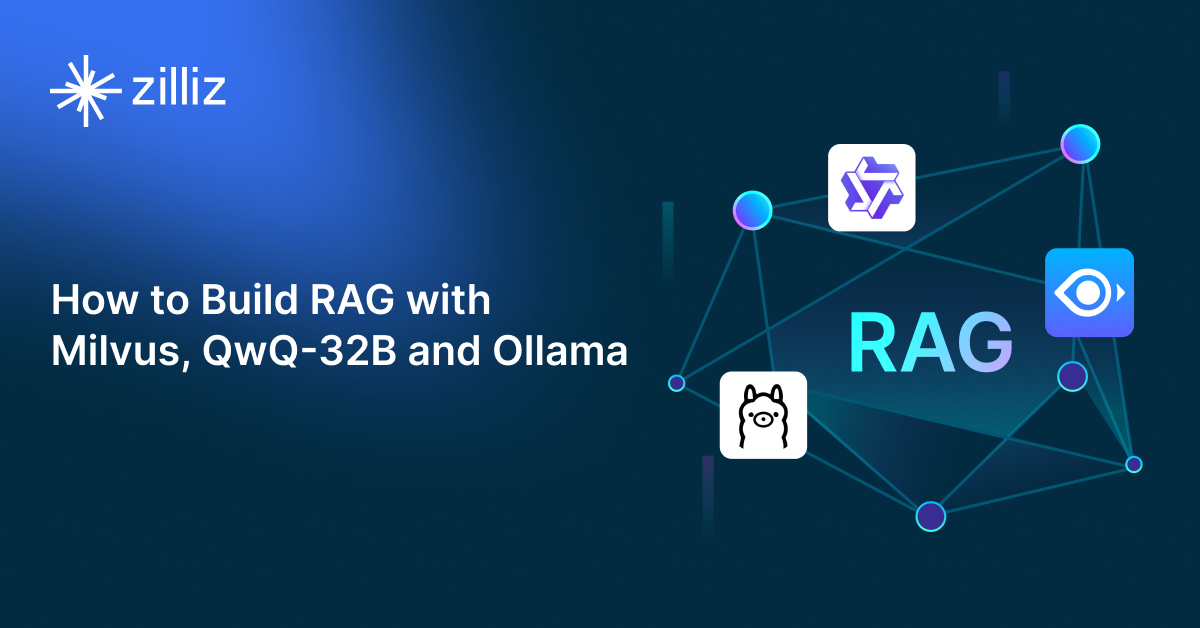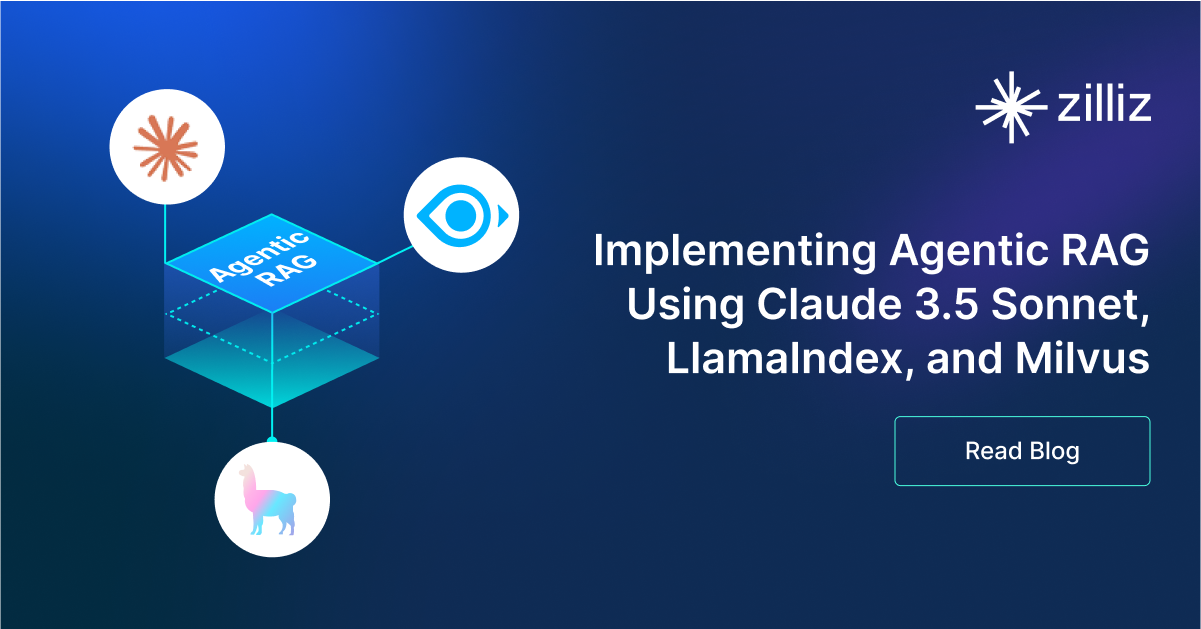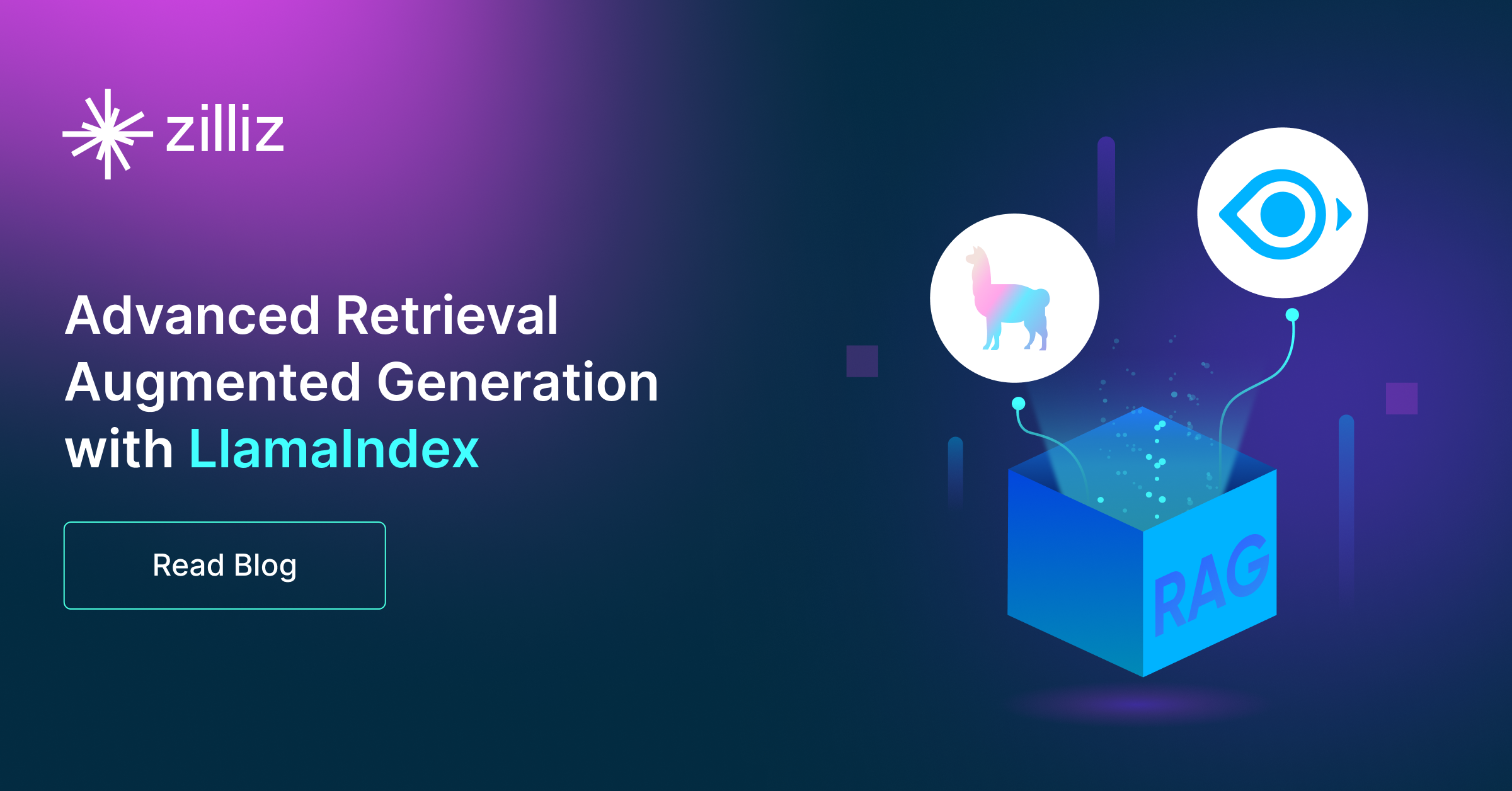Build RAG Chatbot with LangChain, Milvus, Google Vertex AI Gemini 2.0 Flash-Lite, and Amazon Titan Text Embeddings v2
Introduction to RAG
Retrieval-Augmented Generation (RAG) is a game-changer for GenAI applications, especially in conversational AI. It combines the power of pre-trained large language models (LLMs) like OpenAI’s GPT with external knowledge sources stored in vector databases such as Milvus and Zilliz Cloud, allowing for more accurate, contextually relevant, and up-to-date response generation. A RAG pipeline usually consists of four basic components: a vector database, an embedding model, an LLM, and a framework.
Key Components We'll Use for This RAG Chatbot
This tutorial shows you how to build a simple RAG chatbot in Python using the following components:
- LangChain: An open-source framework that helps you orchestrate the interaction between LLMs, vector stores, embedding models, etc, making it easier to integrate a RAG pipeline.
- Milvus: An open-source vector database optimized to store, index, and search large-scale vector embeddings efficiently, perfect for use cases like RAG, semantic search, and recommender systems. If you hate to manage your own infrastructure, we recommend using Zilliz Cloud, which is a fully managed vector database service built on Milvus and offers a free tier supporting up to 1 million vectors.
- Google Vertex AI Gemini 2.0 Flash-Lite: This model streamlines AI deployment with an emphasis on low-latency and cost-efficient solutions. It excels in real-time applications like chatbots and interactive tools, combining high performance with seamless integration across various frameworks. Ideal for businesses looking to enhance user engagement without compromising efficiency.
- Amazon Titan Text Embeddings v2: This model generates high-quality text embeddings, enabling nuanced semantic understanding and similarity comparisons. It boasts enhanced performance and scalability, making it suitable for tasks such as information retrieval, recommendation systems, and sentiment analysis. Ideal for applications needing robust and efficient language representation at scale.
By the end of this tutorial, you’ll have a functional chatbot capable of answering questions based on a custom knowledge base.
Note: Since we may use proprietary models in our tutorials, make sure you have the required API key beforehand.
Step 1: Install and Set Up LangChain
%pip install --quiet --upgrade langchain-text-splitters langchain-community langgraph
Step 2: Install and Set Up Google Vertex AI Gemini 2.0 Flash-Lite
pip install -qU "langchain[google-vertexai]"
# Ensure your VertexAI credentials are configured
from langchain.chat_models import init_chat_model
llm = init_chat_model("gemini-1.5-flash", model_provider="google_vertexai")
Step 3: Install and Set Up Amazon Titan Text Embeddings v2
pip install -qU langchain-aws
from langchain_aws import BedrockEmbeddings
embeddings = BedrockEmbeddings(model_id="amazon.titan-embed-text-v2:0")
Step 4: Install and Set Up Milvus
pip install -qU langchain-milvus
from langchain_milvus import Milvus
vector_store = Milvus(embedding_function=embeddings)
Step 5: Build a RAG Chatbot
Now that you’ve set up all components, let’s start to build a simple chatbot. We’ll use the Milvus introduction doc as a private knowledge base. You can replace it with your own dataset to customize your RAG chatbot.
import bs4
from langchain import hub
from langchain_community.document_loaders import WebBaseLoader
from langchain_core.documents import Document
from langchain_text_splitters import RecursiveCharacterTextSplitter
from langgraph.graph import START, StateGraph
from typing_extensions import List, TypedDict
# Load and chunk contents of the blog
loader = WebBaseLoader(
web_paths=("https://milvus.io/docs/overview.md",),
bs_kwargs=dict(
parse_only=bs4.SoupStrainer(
class_=("doc-style doc-post-content")
)
),
)
docs = loader.load()
text_splitter = RecursiveCharacterTextSplitter(chunk_size=1000, chunk_overlap=200)
all_splits = text_splitter.split_documents(docs)
# Index chunks
_ = vector_store.add_documents(documents=all_splits)
# Define prompt for question-answering
prompt = hub.pull("rlm/rag-prompt")
# Define state for application
class State(TypedDict):
question: str
context: List[Document]
answer: str
# Define application steps
def retrieve(state: State):
retrieved_docs = vector_store.similarity_search(state["question"])
return {"context": retrieved_docs}
def generate(state: State):
docs_content = "\n\n".join(doc.page_content for doc in state["context"])
messages = prompt.invoke({"question": state["question"], "context": docs_content})
response = llm.invoke(messages)
return {"answer": response.content}
# Compile application and test
graph_builder = StateGraph(State).add_sequence([retrieve, generate])
graph_builder.add_edge(START, "retrieve")
graph = graph_builder.compile()
Test the Chatbot
Yeah! You've built your own chatbot. Let's ask the chatbot a question.
response = graph.invoke({"question": "What data types does Milvus support?"})
print(response["answer"])
Example Output
Milvus supports various data types including sparse vectors, binary vectors, JSON, and arrays. Additionally, it handles common numerical and character types, making it versatile for different data modeling needs. This allows users to manage unstructured or multi-modal data efficiently.
Optimization Tips
As you build your RAG system, optimization is key to ensuring peak performance and efficiency. While setting up the components is an essential first step, fine-tuning each one will help you create a solution that works even better and scales seamlessly. In this section, we’ll share some practical tips for optimizing all these components, giving you the edge to build smarter, faster, and more responsive RAG applications.
LangChain optimization tips
To optimize LangChain, focus on minimizing redundant operations in your workflow by structuring your chains and agents efficiently. Use caching to avoid repeated computations, speeding up your system, and experiment with modular design to ensure that components like models or databases can be easily swapped out. This will provide both flexibility and efficiency, allowing you to quickly scale your system without unnecessary delays or complications.
Milvus optimization tips
Milvus serves as a highly efficient vector database, critical for retrieval tasks in a RAG system. To optimize its performance, ensure that indexes are properly built to balance speed and accuracy; consider utilizing HNSW (Hierarchical Navigable Small World) for efficient nearest neighbor search where response time is crucial. Partitioning data based on usage patterns can enhance query performance and reduce load times, enabling better scalability. Regularly monitor and adjust cache settings based on query frequency to avoid latency during data retrieval. Employ batch processing for vector insertions, which can minimize database lock contention and enhance overall throughput. Additionally, fine-tune the model parameters by experimenting with the dimensionality of the vectors; higher dimensions can improve retrieval accuracy but may increase search time, necessitating a balance tailored to your specific use case and hardware infrastructure.
Google Vertex AI Gemini 2.0 Flash-Lite optimization tips
Gemini 2.0 Flash-Lite is a lightweight, fast-response model suited for cost-efficient RAG applications. Improve retrieval by using high-precision embeddings to minimize irrelevant context. Structure prompts efficiently, keeping them short and well-organized. Adjust temperature (0.1–0.2) for accuracy, tuning top-p for output variety when needed. Cache frequent queries to reduce API usage and improve performance. Use Google’s auto-scaling infrastructure to handle demand spikes seamlessly. If deploying multiple models, utilize Flash-Lite for initial filtering and summarization while reserving larger models for in-depth reasoning.
Amazon Titan Text Embeddings v2 optimization tips
Amazon Titan Text Embeddings v2 is a scalable model that performs well in large-scale text retrieval tasks. Optimize retrieval by preprocessing input text to remove noise and focus on high-value content, which can improve the efficiency of embedding generation. Use vector compression techniques like quantization or dimensionality reduction to reduce memory and storage costs without significantly impacting retrieval accuracy. When querying, implement hybrid search strategies combining dense vector search and traditional keyword-based search to improve retrieval speed and relevance. For large-scale applications, batch text processing to reduce API calls and enhance throughput. Cache high-demand embeddings to minimize redundant processing and speed up query response times. Regularly update and retrain the embedding model to maintain accuracy with fresh data.
By implementing these tips across your components, you'll be able to enhance the performance and functionality of your RAG system, ensuring it’s optimized for both speed and accuracy. Keep testing, iterating, and refining your setup to stay ahead in the ever-evolving world of AI development.
RAG Cost Calculator: A Free Tool to Calculate Your Cost in Seconds
Estimating the cost of a Retrieval-Augmented Generation (RAG) pipeline involves analyzing expenses across vector storage, compute resources, and API usage. Key cost drivers include vector database queries, embedding generation, and LLM inference.
RAG Cost Calculator is a free tool that quickly estimates the cost of building a RAG pipeline, including chunking, embedding, vector storage/search, and LLM generation. It also helps you identify cost-saving opportunities and achieve up to 10x cost reduction on vector databases with the serverless option.
 Calculate your RAG cost
Calculate your RAG cost
What Have You Learned?
Wow, what a journey we've embarked on together! In this tutorial, you’ve harnessed the power of LangChain to create a seamless framework that elegantly ties together the various components of your cutting-edge RAG system. You’ve learned how to utilize Milvus as your lightning-fast vector database, enabling you to perform rapid searches and retrieve information with astounding efficiency. Isn’t it exhilarating to see how easily you can access relevant data when you need it?
Through the integration of Google Vertex AI Gemini 2.0 Flash-Lite, you've equipped your application with advanced conversational intelligence, allowing it to engage users in a dynamic and meaningful way. Pairing this with Amazon Titan Text Embeddings v2, you’ve discovered how to generate rich semantic representations that enhance your application’s understanding and context. These components not only work well on their own, but when combined, they create an intelligent system capable of responding precisely and providing insightful information.
Plus, the extra features like optimization tips and a free cost calculator offer you practical tools to fine-tune and scale your solutions effortlessly. Now, as you reflect on all these capabilities, I encourage you to take that excitement and dive into building your own RAG application! Don’t just stop here—experiment, innovate, and watch your ideas come to life. Your adventure in the world of database-driven conversational AI is just beginning, and the possibilities are endless! So, what are you waiting for? Let’s get building!
Further Resources
🌟 In addition to this RAG tutorial, unleash your full potential with these incredible resources to level up your RAG skills.
- How to Build a Multimodal RAG | Documentation
- How to Enhance the Performance of Your RAG Pipeline
- Graph RAG with Milvus | Documentation
- How to Evaluate RAG Applications - Zilliz Learn
- Generative AI Resource Hub | Zilliz
We'd Love to Hear What You Think!
We’d love to hear your thoughts! 🌟 Leave your questions or comments below or join our vibrant Milvus Discord community to share your experiences, ask questions, or connect with thousands of AI enthusiasts. Your journey matters to us!
If you like this tutorial, show your support by giving our Milvus GitHub repo a star ⭐—it means the world to us and inspires us to keep creating! 💖
- Introduction to RAG
- Key Components We'll Use for This RAG Chatbot
- Step 1: Install and Set Up LangChain
- Step 2: Install and Set Up Google Vertex AI Gemini 2.0 Flash-Lite
- Step 3: Install and Set Up Amazon Titan Text Embeddings v2
- Step 4: Install and Set Up Milvus
- Step 5: Build a RAG Chatbot
- Optimization Tips
- RAG Cost Calculator: A Free Tool to Calculate Your Cost in Seconds
- What Have You Learned?
- Further Resources
- We'd Love to Hear What You Think!
Content
Vector Database at Scale
Zilliz Cloud is a fully-managed vector database built for scale, perfect for your RAG apps.
Try Zilliz Cloud for Free


